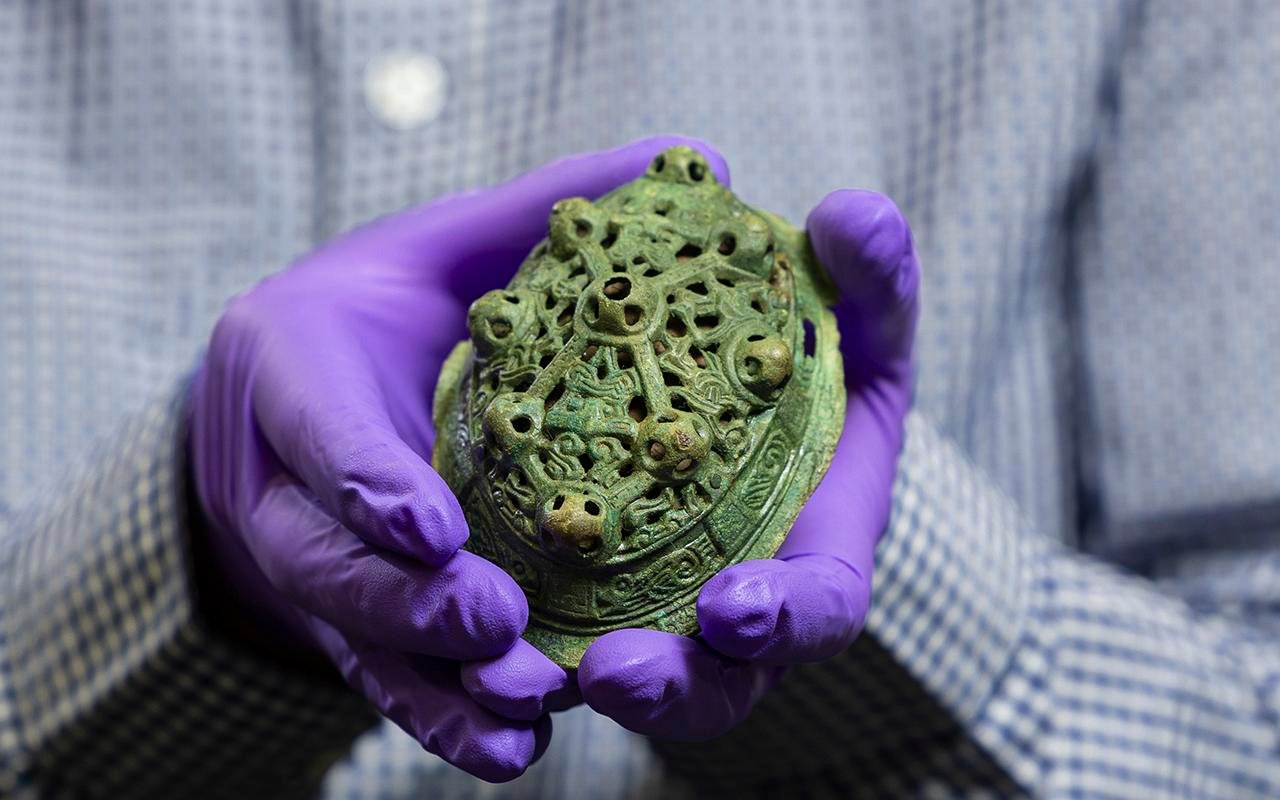High above the southern edge of the Teotihuacan Valley (Mexico) rises Cerro Patlachique — a peak now shown to have served as a major pilgrimage shrine long before, during, and after the heyday of the city of Teotihuacan (c. CE 150–550). Recent lidar mapping and the documentation of 40 carved stone “monuments” (petroglyphs and boulders moved into place) reveal that the summit was a ritual locus devoted primarily to water and mountain deities, calendrical observances, and regional pilgrimage.
 Examples of monuments investigated by the Project Plaza of the Columns Complex with anthropomorphic forms (drawing and models by A. Texis Muñoz; © Project Plaza of the Columns Complex). Credit: N. Sugiyama et al., Antiquity (2025); CC BY 4.0
Examples of monuments investigated by the Project Plaza of the Columns Complex with anthropomorphic forms (drawing and models by A. Texis Muñoz; © Project Plaza of the Columns Complex). Credit: N. Sugiyama et al., Antiquity (2025); CC BY 4.0
The investigation recorded 34 previously unpublished monuments and an existing corpus of six, all clustered on the summit of Cerro Patlachique. The finds include stone boulders either carved in situ or transported and placed in alignment with newly mapped architecture: a temple, water reservoirs, and an avenue — all roughly matching Teotihuacan’s orientation.
Ceramics across the site indicate that occupation began during an incipient phase of urbanisation, and the shrine remained in use well beyond the decline of Teotihuacan. In fact, the ceremonial complex bridged pre-urban, Classic, and Post-Classic phases.
A feature of the monuments that catches the eye is the repeтιтion of images of two key deities: the Storm God, usually shown with goggle eyes and a fanged mouth, and the Water Goddess. Nine carvings of the Storm God and three of the Water Goddess were documented.
 Previously published monuments. Credit: N. Sugiyama et al., Antiquity (2025); CC BY 4.0
Previously published monuments. Credit: N. Sugiyama et al., Antiquity (2025); CC BY 4.0
The two gods appear together in three instances, evoking the celestial and terrestrial water forces; they thereby link the mountain with seasonal rainfall and ritual.
The calendrical signs are equally important. Thirteen of the monuments bear explicit 260-day calendar dates and numerals. At least eight refer to year-bearer day names — key markers in the 365-day solar year as tracked in ancient highland Mexico.
Spatial placement is not random. The deities’ carvings cluster east of the main avenue and at the heads of seasonal water streams linking mountain, rain, and direction.
This directional sensitivity aligns Cerro Patlachique with other sacred mountains around Teotihuacan, notably the northern Cerro Gordo. The southern mountain was its counterpart, creating a sacred vertical axis across the valley.
The variation in carving style suggests multiple actors: some monuments, executed in fine Classic Teotihuacan style, likely reflect state-commissioned works; others, rougher and more individualistic, point to private or pilgrim activity. One stone shows a carving superimposed upon an earlier image — evidence that visitors returned, modified, and reused the shrine over time.
This combination of official and personal devotional activity positions the summit as both publicly sanctioned and individualised, a dynamic complement to the urban center of Teotihuacan.
The findings at Cerro Patlachique highlight the long-term integration of mountain worship, water rituals, and calendrical ceremony in the Teotihuacan cultural sphere. The presence of year-bearer dates on the monuments provides new lines of evidence for reading the 260-day ritual cycle within the city and its environs.
Moreover, the summit shrine underlines the connectivity of city, landscape, and ritual networks: the residents of the valley did not confine their sacrality to the urban core but extended it into the surrounding mountains.
Cerro Patlachique emerges as a key ritual destination across centuries — a pilgrimage mountain where carved stones encoded divine presence, calendar time, and sacred geography. As a southern counterpart to the more often studied northern mountains of Teotihuacan, it underscores the breadth and depth of one of Mesoamerica’s great urban cultures — drawing together mountain worship, water rites, calendrical knowledge, and social practice in a spectacular summit shrine.
More information: Sugiyama, N., Taube, K. A., Sugiyama, S., & Texis Muñoz, A. (2025). Carved monuments from Cerro Patlachique in the Teotihuacan Valley, Mexico. Antiquity, 1–19. doi:10.15184/aqy.2025.10221





